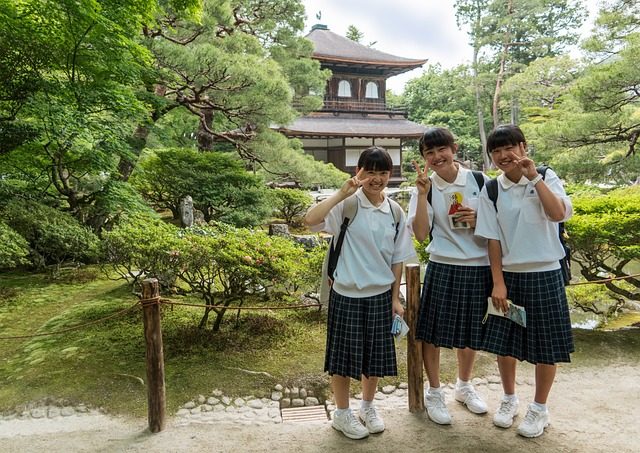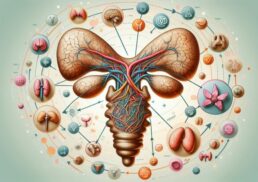Have you ever felt that there must be more to life than just going through the motions? That there’s a deeper purpose waiting to be discovered, one that could bring greater fulfillment and happiness? Enter Ikigai, the Japanese secret to a long and happy life. This ancient concept holds the key to finding your unique life purpose and true ikigai meaning, guiding you on a journey of self-discovery that promises to transform every aspect of your existence. So, are you ready to uncover your Ikigai and embrace a more meaningful life? Let’s dive in!
Table of Contents
Short Summary
Ikigai is a Japanese concept encouraging self-discovery and development to lead a meaningful life.
The Ikigai diagram can be used as a starting point for uncovering individual purpose, leading to increased happiness, well-being and longevity.
Inspiring examples demonstrate how individuals can live purposeful lives through their passions or contributions. Integrating Ikigai into daily life involves striking balance between personal & professional pursuits.
Unraveling the Essence of Ikigai: A Japanese Secret to a Fulfilling Life

Ikigai is a deeply rooted Japanese concept that represents a reason for being, a life purpose, and a journey of self-discovery that leads to a fulfilling and meaningful life. With a long history dating back to the Heian period (794-1185), Ikigai has been an integral part of Japanese culture and philosophy. The Japanese word ikigai itself is a combination of “iki” (life) and “gai” (value or worth), emphasizing the importance of finding your own ikigai and uncovering the true meaning of what truly matters to you, living a life aligned with these values.
Central to the concept of Ikigai is the idea that life’s purpose is not a fixed destination, but rather an ongoing process of self-discovery and development. It is about exploring your passions, values, abilities, and aptitudes, and using them to create a life that is both fulfilling and meaningful. In doing so, you’ll not only experience greater happiness and well-being, but also contribute to the betterment of the world around you.
While some may mistakenly associate Ikigai with finding one’s professional “sweet spot,” it is essential to understand that this concept transcends any boundaries or conditions. In fact, Ikigai is not limited to a single passion or occupation, as many people may have more than one Ikigai in their lives, evolving and changing over time. The journey to discovering your Ikigai is about embracing this fluidity and remaining open to the possibilities that life presents.
Understanding the Japanese Concept of Ikigai
Ikigai is a term that combines the Japanese words “iki” (life) and “gai” (worthiness), emphasizing the pursuit of a passionate and challenging purpose. This concept, rooted in the japanese word “Ikigai,” is deeply connected to the ideas of flow states and eudaimonia, the classical Greek concept of living a life of fulfillment, resulting in the most enduring form of joy. In the pursuit of Ikigai, one must rely on their passions to traverse the path successfully.
The interconnectedness between physical, emotional, and spiritual states is integral to the Japanese concept of Ikigai. By exploring these different aspects of life and working to harmonize them, individuals can achieve a sense of balance and fulfillment in their lives. This holistic approach to living emphasizes the importance of being present and finding joy in small moments, allowing for greater overall happiness and well-being.
Ikigai is often associated with the notion of flow, as described by Hungarian-American psychologist Mihaly Csikszentmihalyi. Flow is a state of peak performance, where a person is fully engaged in a challenging and meaningful activity, pushing their body or mind to its limits. By embracing the concept of Ikigai and striving to achieve flow, individuals can experience a greater sense of purpose, fulfillment, and happiness in their lives.
Demystifying the Ikigai Diagram
The popular Ikigai diagram, which aims to help individuals identify their life purpose, is not an original Japanese concept but was adapted from Andrés Zuzunaga’s purpose diagram. This diagram shares similarities with Jim Collins’ Hedgehog Concept, a tool designed to help businesses identify their core strengths and purpose. While the Ikigai diagram can be a useful tool for self-reflection, it is essential to understand its Westernized origins and limitations.
The Ikigai diagram consists of four overlapping circles, representing what one loves, what one is good at, what the world needs, and what one can be paid for. However, fulfilling all four conditions in the diagram is not essential to attain true happiness or Ikigai. In fact, focusing solely on these four aspects can limit one’s ability to discover their unique life purpose, as Ikigai transcends any specific occupation, passion, or condition.
It is important to remember that the journey to discovering one’s Ikigai is deeply personal and will differ for each individual. Rather than strictly adhering to the Ikigai diagram, consider it as a starting point for self-reflection and exploration. By remaining open to new experiences and embracing the fluid nature of life’s purpose, you will be better equipped to uncover your own personal Ikigai and live a more fulfilling life.
The Power of Ikigai: Happiness, Well-Being, and Longevity

Embracing the concept of Ikigai is associated with increased happiness, well-being, and longevity. By providing direction, fulfillment, and balance in life, individuals who have discovered their Ikigai experience a happy and long life with greater overall happiness and well-being. This connection between Ikigai and happiness can also be linked to the concept of flow states, which involve fully engaging in challenging and meaningful activities, resulting in peak performance and a sense of accomplishment.
Moreover, pursuing one’s Ikigai is closely related to eudaimonic well-being, the classical Greek concept of living a life of fulfillment, which results in the most enduring form of joy. Engaging in creative activities, such as painting, drawing, or sculpting, can also promote well-being by reducing stress and improving physical and mental health. These creative pursuits have been shown to decrease cortisol levels, a hormone related to stress, and reduce inflammation, which is linked to various chronic diseases such as heart disease, diabetes, and arthritis. Ultimately, these factors contribute to a happy life.
By focusing on finding and nurturing one’s Ikigai, individuals can enjoy a happier, healthier, and more fulfilling life. The pursuit of a purpose-driven life not only benefits the individual but also contributes to the betterment of society as a whole. As more people embrace the concept of Ikigai and strive to live a life of purpose and passion, the collective well-being of society is likely to improve, leading to a more harmonious and prosperous world.
The Connection Between Ikigai and the Blue Zones
The concept of Ikigai is closely linked to the Blue Zones, areas where people live longer and healthier lives due to their strong sense of purpose and community. In these regions, individuals often have a clear understanding of their life purpose, which keeps them active in mind, body, and spirit. This strong sense of purpose, combined with a supportive community, contributes to the increased life expectancy found in the Blue Zones.
One notable example of the connection between Ikigai and the Blue Zones is the island of Okinawa, Japan, which is known for its high concentration of centenarians. It is believed that the Okinawans’ longevity is due to their strong sense of purpose in life, which keeps them active and engaged in their daily activities. By embracing their Ikigai, the Okinawans have managed to achieve a remarkable level of health and well-being, ultimately leading to a long and happy life, even in old age.
The link between Ikigai and the Blue Zones serves as a powerful reminder of the importance of discovering one’s life purpose and nurturing a strong sense of community. By following the principles of Ikigai and striving to live a purpose-driven life, individuals can enjoy greater happiness, well-being, and longevity, just like the inhabitants of the Blue Zones.
Discovering Your Personal Ikigai: A Journey of Self-Awareness
Discovering your Ikigai is a deeply personal journey that involves self-awareness, introspection, and exploration of your passions, values, strengths, and skills. This journey requires you to look inward and examine your own path, desires, and aspirations. By identifying your unique talents and passions, you can begin to uncover your life purpose and work towards creating a more fulfilling and meaningful existence.
The process of discovering your Ikigai is not a one-time event, but rather an ongoing journey of self-discovery and development. It is essential to be patient and willing to learn from your experiences, both successes and failures, as you navigate the path towards your unique life purpose. Starting with small steps is crucial in discovering your Ikigai, as these changes can eventually become habitual and contribute to sustaining your sense of purpose and fulfillment.
As you embark on this journey of self-awareness and exploration, remember that the pursuit of your Ikigai is not a destination, but a continuous process. Embrace the fluid nature of life’s purpose and remain open to the possibilities that life presents. By doing so, you will be better equipped to uncover your own personal Ikigai and live a more fulfilling life.
Holistic vs. Pragmatic Approaches to Finding Ikigai
There are two primary approaches to finding Ikigai: the holistic approach and the pragmatic approach. The holistic approach emphasizes the interconnectedness between physical, emotional, and spiritual states, focusing on achieving balance and harmony in all aspects of life. This approach requires individuals to be present and mindful, finding joy in small moments and embracing the interconnectedness of their lives.
On the other hand, the pragmatic approach to finding Ikigai emphasizes goal-setting and measurable outcomes, focusing on the practical steps required to achieve one’s life purpose. This approach may involve setting specific goals, such as starting a new career or launching a creative project, and working towards these objectives in a systematic and disciplined manner.
It is important to recognize that both the holistic and pragmatic approaches to finding Ikigai have their merits and can be used in conjunction to discover one’s unique life purpose. By balancing these two approaches and embracing the fluid nature of life’s purpose, individuals can better navigate the journey towards their Ikigai and enjoy a more fulfilling and meaningful existence.
Overcoming Obstacles on Your Ikigai Path
In the pursuit of your Ikigai, you may encounter various obstacles that can hinder your progress and prevent you from fully embracing your life purpose. Some common obstacles include fear, procrastination, and perfectionism, which can hold you back and keep you from realizing your true potential. It is essential to confront these challenges head-on and be willing to adapt to new experiences as you journey towards your Ikigai.
One effective strategy for overcoming obstacles on your Ikigai path is to adopt a growth mindset, which involves embracing challenges as opportunities for learning and growth. By viewing setbacks and failures as valuable learning experiences, you can develop resilience and persistence, allowing you to continue moving forward in the pursuit of your Ikigai.
Another important aspect of overcoming obstacles on your Ikigai journey is adaptation. Recognize that the path towards your life purpose is not always a straight line, and you may need to adjust your course along the way. By remaining flexible and open to change, you will be better equipped to navigate the challenges and setbacks that come your way, ultimately leading to a more fulfilling and meaningful life.
For more information visit The Role of Ikigai in Overcoming Obstacles: How Your Purpose Can Help You Face Life’s Challenges
Embracing the Journey: Persistence and Adaptation
The journey towards your Ikigai requires persistence, adaptation, and the willingness to start anew repeatedly. As you embark on this journey of self-discovery and personal growth, it is important to recognize that setbacks and challenges are a natural part of the process. By confronting these obstacles head-on and learning from your experiences, you can build a strong foundation for future attempts and continue moving forward in the pursuit of your life purpose.
Embracing the journey of Ikigai also involves recognizing the value of past experiences, both successes and failures, as a foundation for future growth and development. By reflecting on these experiences and using them as a basis for learning and improvement, you can gain valuable insights and wisdom that can guide you on your path towards discovering your unique life purpose.
As you continue on your Ikigai journey, remember that persistence and adaptation are key to overcoming obstacles and embracing new opportunities. Stay committed to your pursuit of a purpose-driven life, and be willing to adapt and grow as you navigate the challenges and triumphs that come your way. In doing so, you will be better equipped to uncover your own personal Ikigai and live a more fulfilling and meaningful life.
Ikigai in Action: Inspiring Examples of Living a Purpose-Driven Life
Throughout history, numerous individuals have found their Ikigai through their passions, professions, or contributions to the world, serving as inspiring examples of living a purpose-driven life. These individuals have dedicated their lives to their unique passions and purposes, often making a significant impact on the world around them and inspiring others to follow in their footsteps.
One such example is Jiro Ono, a world-renowned sushi chef who has dedicated his life to refining and innovating the art of sushi-making. By striving for excellence in his craft and sharing his expertise and passion with others, Jiro embodies the essence of Ikigai, one of the two Japanese words representing living a life of purpose and fulfillment.
Another inspiring example is Jane Goodall, a primatologist and anthropologist who followed her passion for primates and dedicated her life to studying and conserving chimpanzees in the wild. Goodall’s pioneering research has not only deepened our understanding of chimpanzee behavior and social structure, but has also contributed to the conservation of these remarkable animals and their habitats. By embracing her Ikigai and pursuing her unique life purpose, Goodall has made a lasting impact on the world of primatology and wildlife conservation.
Integrating Ikigai into Your Daily Life
To truly benefit from the concept of Ikigai, it is important to integrate it into your daily life, finding joy in small moments and pursuing your passions and purpose in a sustainable and harmonious manner. By being present and mindful of the current moment, you can foster a sense of gratitude and appreciation for the experiences and opportunities that life presents to you.
Incorporating Ikigai into your daily routine involves striking a balance between personal and professional pursuits, ensuring that you can maintain your sense of purpose and fulfillment without sacrificing your well-being or happiness. This may involve setting achievable goals, taking gradual steps towards your objectives, and being open to growth and change as you progress on your Ikigai journey.
As you work to integrate Ikigai into your daily life, remember to be patient and compassionate with yourself. The journey towards discovering your unique life purpose is a deeply personal and ongoing process, and it is important to give yourself the time and space needed to explore, learn, and grow. By remaining committed to your Ikigai journey and embracing the fluid nature of life’s purpose, you can create a more fulfilling and meaningful existence.
Summary
In conclusion, the pursuit of Ikigai offers the key to unlocking a more fulfilling and purpose-driven life. This ancient Japanese concept provides a framework for discovering your unique life purpose, embracing a sense of meaning and fulfillment in your daily life, and ultimately contributing to a happier, healthier, and more harmonious world.
As you embark on your own Ikigai journey, remember that the path towards discovering your life purpose is a deeply personal and ongoing process. Stay committed to your pursuit, embrace the challenges and triumphs that come your way, and always remain open to the possibilities that life presents. In doing so, you will not only unlock the secret to a long and happy life, but also create a more fulfilling and meaningful existence for yourself and those around you.
Frequently Asked Questions
What is the concept of ikigai?
Ikigai is a Japanese concept combining the terms “iki” (meaning “life”) and “gai” (meaning “benefit”), which together refer to that which gives one’s life purpose, meaning, or worth.
This concept is similar to the French term “raison d’etre”.
What are the 4 parts of ikigai?
Ikigai consists of four main elements: your passion, mission, vocation, and profession. These are combined to explore the convergence of what you love, what you’re good at, what the world needs, and what you can be paid for.
This convergence is the key to finding your ikigai and living a life of purpose and fulfillment. It is important to remember that your ikigai is unique to you and will be unique to you.
Can an ikigai be a person?
Yes, an ikigai can be a person, as it is something that brings value and joy to life. It could be a close friend or a family member, for example.
How can I use the Ikigai diagram to find my life purpose?
Using the Ikigai diagram as a reflection tool can help you identify and explore your passions, skills, and potential contributions to the world.
However, it is important to remember that the diagram should not be taken too literally in your pursuit of your life purpose.
How does Ikigai contribute to happiness and well-being?
Ikigai can bring greater joy, purpose, and satisfaction to life by providing a framework for finding balance and meaning, resulting in enhanced wellbeing and increased happiness.









